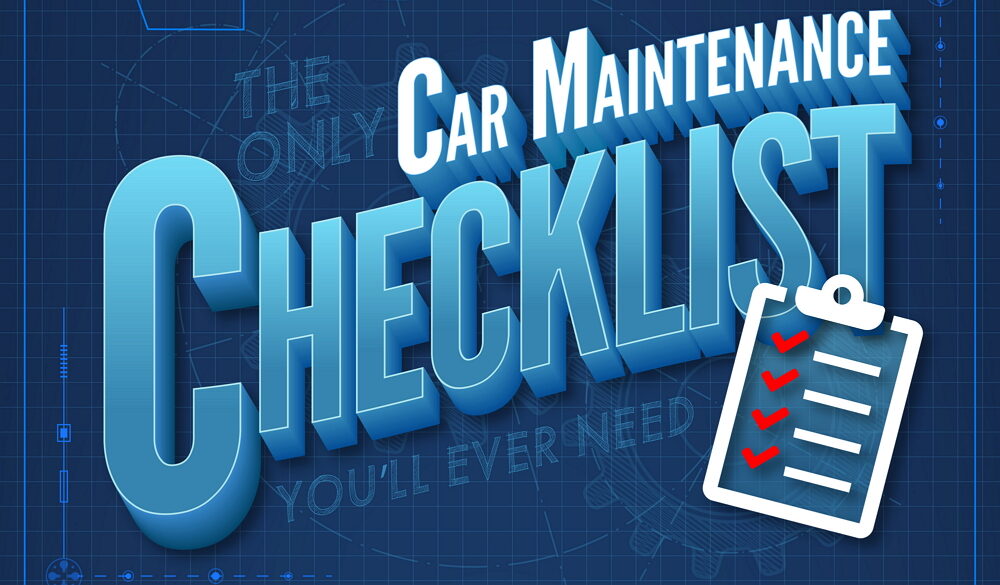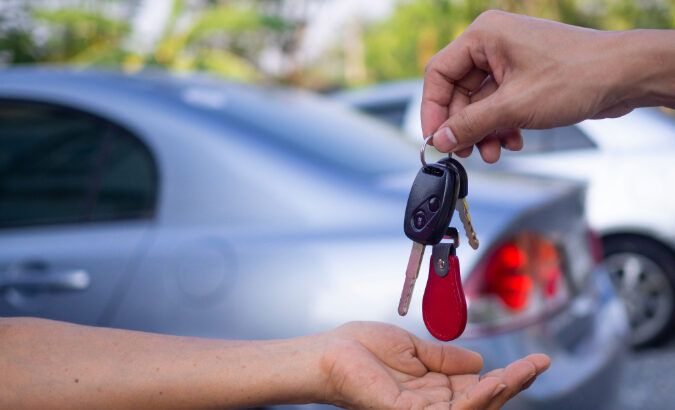
Staying on top of your car’s maintenance can prolong the life of your vehicle. It can also save you money by avoiding costly repairs and keep you and your family safe on the road. You don’t have to be an auto mechanic to keep your car well-maintained; all you need is a checklist and the discipline to stay on top of it.
View the complete car maintenance schedule below to help you with regular vehicle maintenance. You can use this checklist to set maintenance reminders in your calendar. Stick to this schedule and you’ll be driving smoothly and safely for years to come.
![The Ultimate Car Maintenance Checklist [Infographic]](https://blog.nationwide.com/wp-content/uploads/2016/04/Car-Maintenance-Infographic-FINAL.png)
Service right away
Attend to as soon as possible if your car is experiencing the following:
Check engine light
The check engine light indicates your electronic control system has run into a problem it can’t fix. If this light is constant, get the car checked as soon as you can. If it’s flashing, you may need to get to a service shop immediately. Keep in mind, service indicators vary by vehicle, so be sure to check your owner’s manual for specific details and instructions.
Tire pressure light
If this light comes on, check the tire pressure immediately, top off the air in the tire(s) as needed, and investigate possible leaks.
Headlights and Tail lights
If a light goes out, check for a blown fuse. If that’s not the problem, replace the light immediately. Driving with one headlight is unsafe and can get you a ticket. Learn how to change a headlight.
Wiper blades
Replace wiper blades that aren’t doing their job due to damage or wear. Be proactive – wiper blades are relatively inexpensive and driving with reduced visibility endangers everyone.
Check monthly
Attend to the following items below on a monthly basis:
Engine oil
It doesn’t hurt to check the oil level every time you fill up. Keep a bottle of oil (check owner’s manual for grade and weight) in your car’s trunk for topping off. The difference between the “low” and “full” markings on the dipstick is usually one quart.
Coolant/antifreeze
Check the level at the reservoir, and never open a hot radiator cap. When adding coolant, read the bottle carefully – if it’s “premixed” coolant, pour it right in. If it’s concentrated, mix it 50/50 with distilled water before adding.
Windshield wiper fluid
Check the level and top off if needed. Follow instructions on the wiper fluid bottle; like coolant, it may need to be diluted. Never fill the wiper fluid reservoir with plain water.
Check every 3 months or 3,000 miles
Attend to the following items every three months or every 3,000 miles:
Automatic transmission fluid
Leave the car in park with engine running; check the fluid and add the appropriate type (consult owner’s manual) if it’s low.
Battery and cables
Check the battery is mounted securely and corrosion-free; also make sure that cables are fastened tightly.
Belts
Check that V-belts and serpentine belts are tight and in good condition. If they’re frayed or worn, it’s time to replace.
Engine air filter
The filter should be white or off-white; if it’s dirty or full of debris, get a new one. If you’ve been running on the same filter for a year, replace it even if it is not noticeably dirty.
Hoses
Hoses that are leaking, cracked or brittle need to be replaced.
Power steering fluid
Check level when car is warmed up and top off if necessary. Inspect system for leaks if topping off becomes frequent.
Exhaust
Inspect for leaks and damage, especially if the exhaust is making a strange noise. Repair immediately if needed.
Tire pressure and condition
Check the pressure of all tires, including the spare. Keep an eye out for uneven wear patterns, and generally look out for damage to treads and sidewalls. Maintain recommended tire pressure, and replace damaged tires.
Tire treads
A tire is worn out if its tread depth is 2/32” or less. If you drive in wet conditions, a better limit is 4/32”. Check tread depth with a penny: If the top of Lincoln’s head is covered, you still have 2/23” of depth remaining. Doing the same trick with a quarter will tell you whether you’ve got 4/32” left.
Check every 5,000 miles
Attend to the following items every 5,000 miles:
Engine oil and filter
Check both the oil and filter and be sure to use oil of the grade and weight specified in the owner’s manual. Oil change intervals can vary widely with age of vehicle and driving habits; consult the manual for the manufacturer’s recommendation.
Tire rotation
There are a number of ways to rotate your tires. Tire rotation methods vary based on the type and size of tires you have, whether your car is front, rear, all, or four-wheel drive, and other factors. Consult your owner’s manual beforehand, as there are certain types of wheels and tires that should not be rotated.
Check every 6 months or 6,000 miles
Attend to the following items every six months or every 6,000 miles:
Chassis Lubrication
If your car isn’t “lubed for life” (check owner’s manual), the chassis, steering, and suspension systems may need to be lubed.
Exterior
Clean your car when it’s dirty. This will vary based on where you drive, where you park your car at home (in a garage or on the street). If you’re driving on wet, salt-caked roads in the winter, wash once a month. Waxing your clean car twice a year protects your car’s finish and defends against damage and rust.
Wiper blades
Replace your wiper blades even if they are not noticeably damaged.
Check every 12 months or 12,000 miles
Attend to the following items annually or every 12,000 miles:
Brakes
Check all elements of the brake system, including brake fluid, brake linings, rotors and pads.
Cabin air filter
Not to be confused with the engine air filter, the cabin air filter is located somewhere under the dashboard (often behind the glove box). It should be replaced annually.
Coolant/antifreeze
Replace annually. If the level is suspiciously low, check for leaks in coolant system. Never open a hot radiator cap.
Check every 2 years
Replace the following items every two years:
- Automatic transmission fluid
- Fluid filter
- Brake fluid
Special cases
Other car maintenance items to inspect are:
Battery
Test and replace your car battery if necessary, beginning when the battery is 3 years old. Batteries typically don’t make it to 6 years.
Tires
Replace at minimum safe tread depth (see above for how to check). Tires will last between 6 and 10 years.
Spark plugs
Spark plug life varies widely depending on the age of your engine, and an engine can still run with a dead plug or two – although you may fail your emissions test. Have spark plugs checked starting at 30,000 miles.
Brakes
Brake pad life varies by vehicle and driving style. It’s time to replace brake pads if they’re less than ¼” thick; some brakes have a wear indicator that emits a squealing sound when the pads are too thin. Check for wear on the rotor as well; if it has grooves or pits, replace or resurface it.
Timing belt
Replace as instructed in owner’s manual – typically between 60,000 and 90,000 miles.
While having a regular car maintenance check-up is important to extend the life of your vehicle, make sure to regularly review your car insurance policy as well. An annual review of your insurance policy could help you save money by considering new life changes, such as a new driver, work changes, or residence changes.
Disclaimer:
The recommendations on this infographic are general and may require professional service or assistance. How you drive your vehicle can also affect the timeline. A truck driven in an urban environment, for example, will put much more wear on its brakes over time than a lightweight vehicle that drives primarily on highways, where braking is minimal. Consult your mechanic if you drive any specific conditions that might be outside the norm.
Sources:
https://www.cargurus.com/Cars/articles/the_car_maintenance_schedule_you_should_follow
https://www.autozone.com/diy/car-care-aware
https://www.tirerack.com/tires/tiretech/tiretech.jsp?tab=Tires



